Gamma Radiation Surges Recorded In Polish And Lithuanian Areas Bordering Belarus
8- 16.09.2024, 16:31
- 26,912
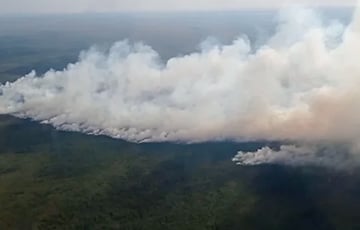
The reason has been named.
The air in the Hrodna region could have been contaminated with radioactive elements that were released during fires in the Chernobyl zone. Monitoring of radiation levels in the air from September 10 to 15 in Polish and Lithuanian areas bordering Belarus showed surges in gamma radiation. One of the readers of Hrodna.life drew attention to this.
The main surge in Poland was on September 10
During the period when Hrodna residents observed haze and felt the smell of burning in the air, a spike in the level of radioactive elements in the air was observed in the border areas of Lithuania and Poland. This is evidenced by the graphs on the website of the Radioactivity Monitoring Group of the Environmental Monitoring (REM) of the Joint Research Centre (JRC) of the European Commission.
For example, at the measuring point in the Polish village of Sidra (27 kilometers from Hrodna), a spike was observed on September 10. With an average gamma radiation level of 0.07 microsieverts per hour (μSv/h), on September 10 it reached 0.092 μSv/h. The next surge was recorded on September 15 — 0.083 μSv/h.
A similar situation was observed in the village of Bartniki (9 kilometers from Sopockino). The average gamma radiation level there is 0.084 μSv/h. The surge occurred on September 10 — 0.116 μSv/h, but in the following days the graph leveled out.
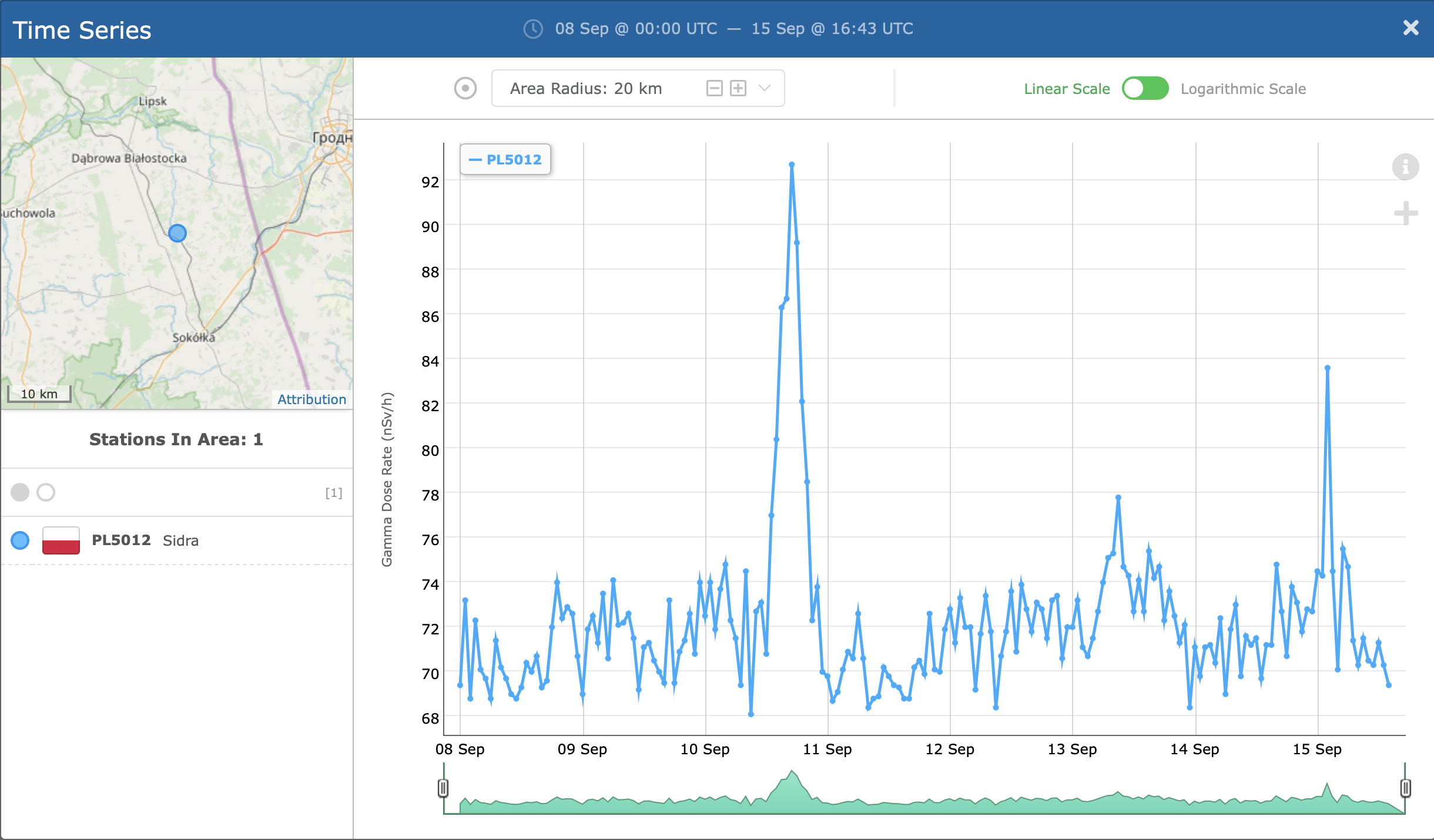
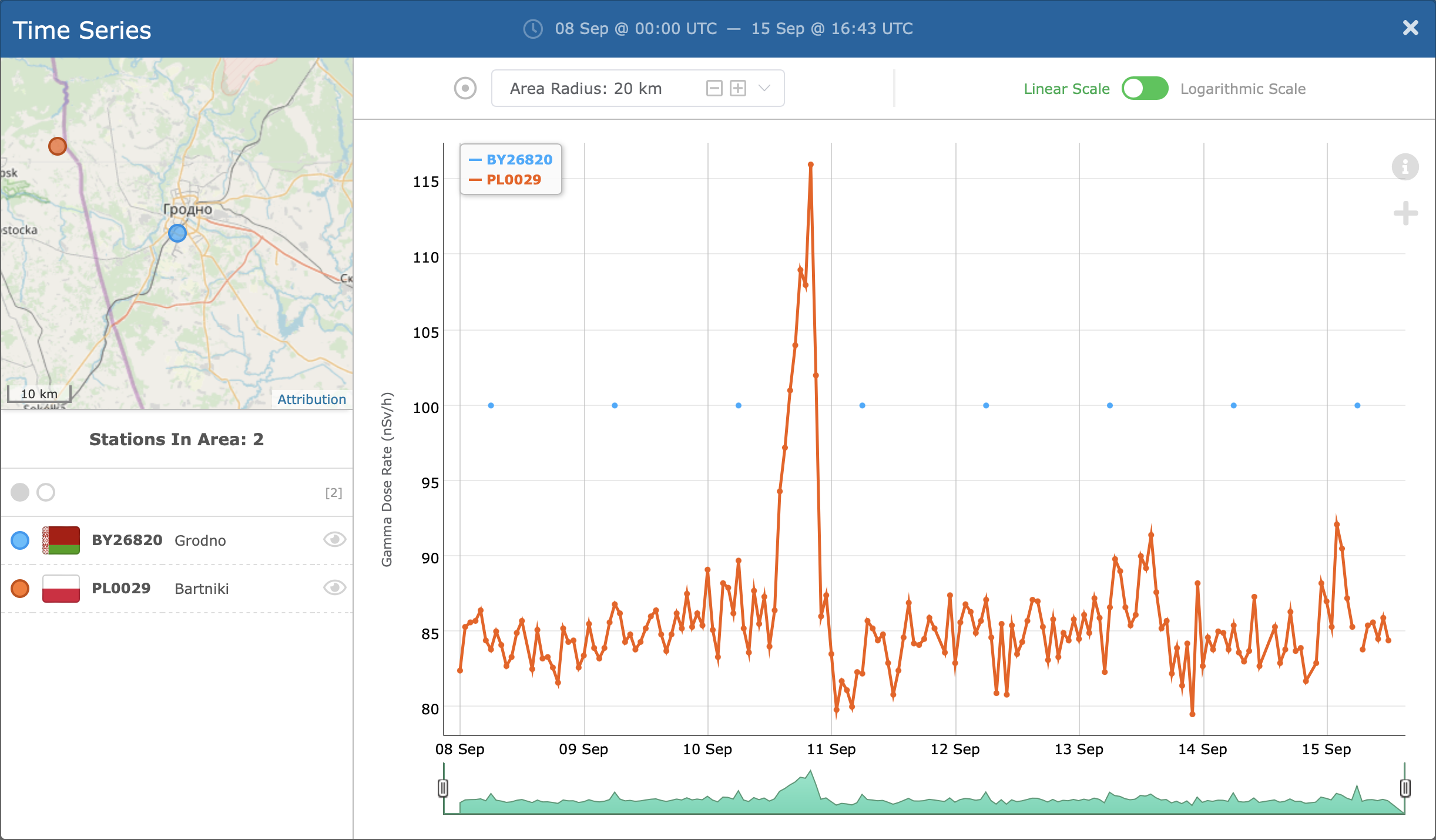
Radiation was “pulled” to Lithuania later — on September 12 and 13
In the Lithuanian village of Dubininkas (about 50 kilometers from Hrodna), the first surge occurred on September 10 — 0.043 μSv/h, and since then the indicator has gradually increased: 0.049 μSv/h on September 12 and 0.051 μSv/h on September 13. The average indicator for this region is 0.033 μSv/h.
In Dieveniskis, near Lida, the monitoring service recorded a peak in radionuclides in the air on September 12 and 13 — 0.071 and 0.073 μSv/h, respectively.
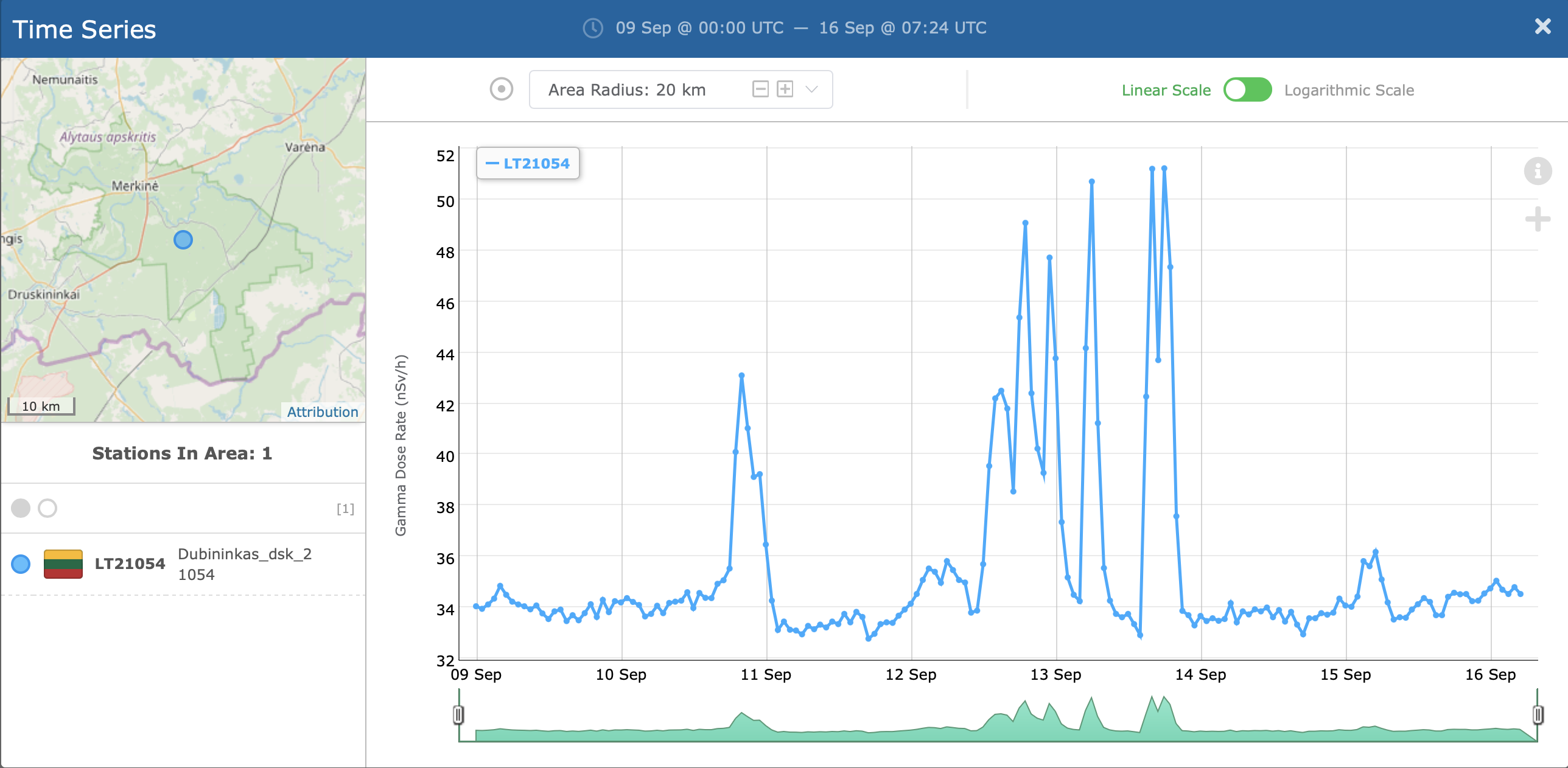
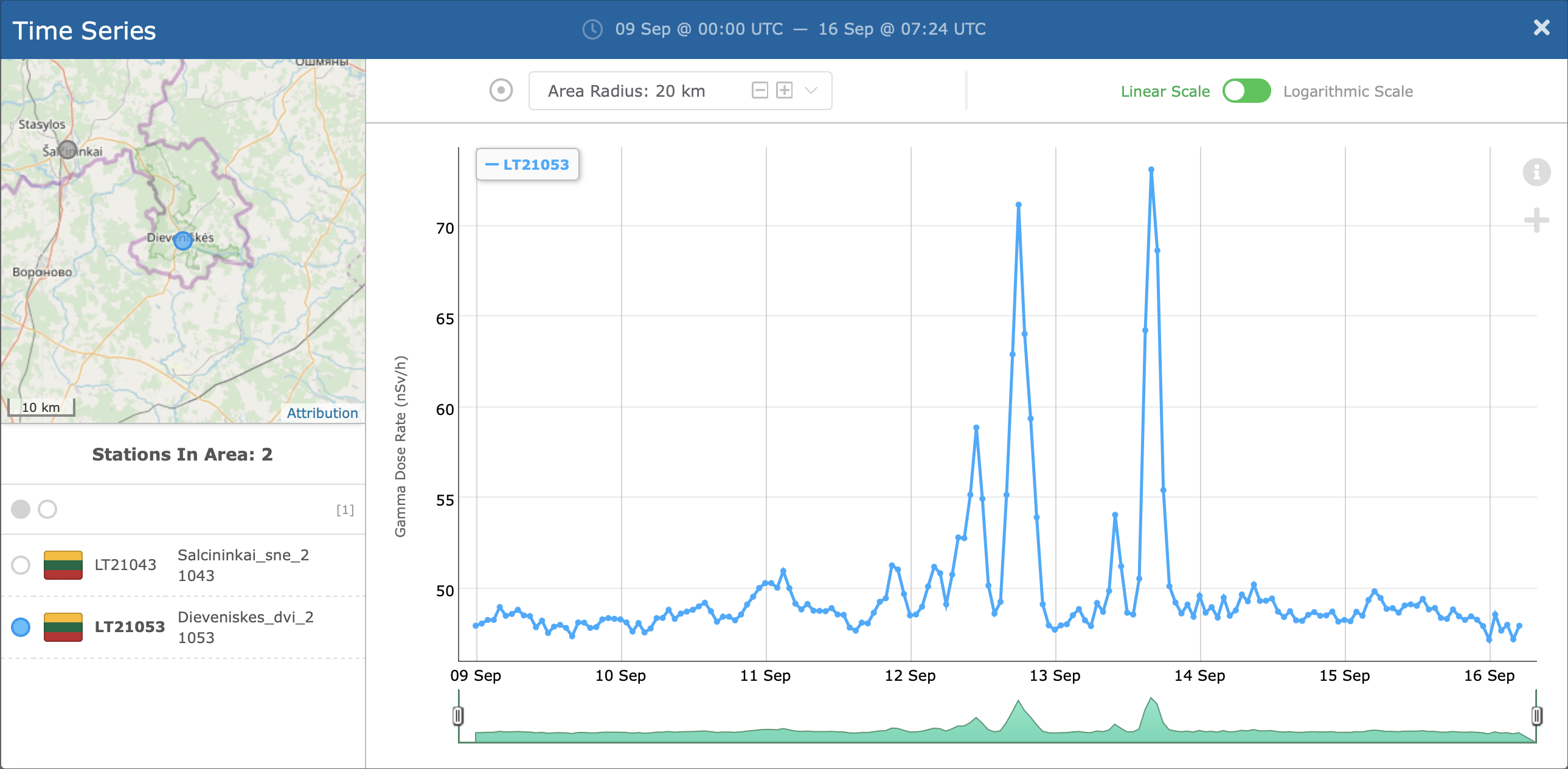
No changes were recorded in Belarus
The REM website does not have data on radiation levels in Belarus. It appears that data from none of the Belarusian measurement points is transmitted to the service.
The Belhydromet website reports that from September 5 to 13, “the radiation situation in the republic remains unchanged”. In Minsk, Vitsebsk, Brest and Hrodna, the gamma radiation level was 0.11 μSv/h, which “corresponds to long-term established values”. Thus, the indicators that Belhydromet presents as standard are considered elevated in Poland and Lithuania compared to the average level. A safe level is considered to be up to 0.2 μSv/h — in this case, radiation does not harm the body. That is, the sharp jumps in radiation levels that were recorded in the vicinity of Hrodna did not harm people. However, they may indirectly confirm that the smell of burning and the haze in the sky came from fires in the vicinity of Chernobyl.











